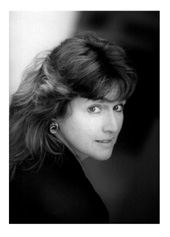
The Two Faces of the Chinese Revolution
There was no great speech to match the great parade that took place in Tienanmen Square on the first of October to celebrate the 50th anniversary of the communist revolution in China. There was nothing in Jiang Zemin’s words reminiscent of the purposefully sarcastic rhetoric of Deng Xiaping. And nothing similar to the epic verses and gesticulations of Mao Zedong.
The great parade was conducted like a three act musical each with its own theme and protagonist: the civil war and Mao, Deng and the building of modern China, and Jiang Zemin, the engineer enlightened by electronic technology, the incarnation of the China of the new millenium. Jiang Zemin was not Deng’s designated heir. Zhao Ziyang had been destined for that position. However, the party deemed unacceptable Ziyang’s support for the students of the pro-democracy demonstrations in May 1989. He was thus removed from power and has been living under house arrest ever since.
The Chinese are in the midst of a transition from a totalitarian regime to one that is neither totalitarian nor democratic. China has rejected collective equality but it has no desire to become individualistic. Jiang Zemin has no ambition to democratize China but rather to transform his country into a modern semi-totalitarian state that seeks consensus on the one hand, but will not tolerate dissent on the other. Just because China is becoming a country where goods may be freely exchanged does not mean that ideas can be freely revealed and confronted.
The truth is that two revolutions were celebrated on October 1st marked by the names of two leaders whose political policies were diametrically opposed. Notwithstanding the entirely divergent philosophies of the two helmsmen, official rhetoric obliges them to live together in symbiotic memory under a common but false label. Although everything positive that has happened in China in the past fifty years was accomplished not because of but despite Mao, it was his portrait that waved above all the others. Ironically, the successes which came about after his death are what enabled such a unitary myth to be staged, camouflaging an unquestionable truth: China has witnessed two revolutions in the last 50 years, moved by two very opposite forces: Mao’s demolition and Deng’s reconstruction. The real rebirth of China didn’t happen on October 1, 1949, but rather on May 5, 1978, the day that Deng launched his socialist doctrine of the distribution of goods according to work rendered.
Only during his very first years in power did Mao follow any polices that could be defined as sensible. In the early fifties, the Communists took over a country overcome by a long period of decadence and thirty eight tormented years, from the liberal insurrection against the last emperor to Mao’s ascension to power in Tienanmen Square. Under the Communists, high inflation was brought under control, a land reform program introduced, industry nationalized and expanded with Soviet aid, and agriculture collectivized. These policies were facilitated by the effort to blend the managerial and educated classes of the old regime with the men of the party apparatus in order to form a new ruling class.
However, Mao wasn’t happy with this collaborative concoction and ended up destroying all that had been accomplished in industry and agriculture during those early years. With his Great Leap Forward (1958-60), he initiated a massive industrial and agricultural development program that was intended to transform China's economy overnight, but which resulted in the largest famine in world history, with an estimated 20–40 million deaths. And with his Cultural Revolution (1966-69), he sought to cleanse the leadership of the party by launching a massive upheaval to purge the revolution of any remaining liberal elements.
When Mao died in 1976 and Deng returned to the palaces of power after having borne two separate periods of purges, persecution, and exile, he inherited the leadership of a country that had precipitated into underdevelopment. He set out to begin the hard work of reconstruction: radical reforms propagated as visionary like the Four Modernizations and others more moderate and technical like decentralization. The Chinese coastal areas became the testing ground for "market socialism." Ironically baptized the Great Leap Backward, these reform measures in reality allowed China to advance economically and eventually surpass growth levels in the communist countries of Eastern Europe. The past twenty years have been dedicated to making up for the time lost by Mao during the interminable autumn of his life.
Even in death the two leaders who guided modern China remain divided. When Deng died he ordered that his ashes be dispersed in water. Nothing could have contrasted more with the treatment that had been reserved for the remains of his predecessor. Mao was and remains embalmed according to a tradition that is decisively Soviet and not Chinese, defying the laws of nature even in death. Mao, immortalized; Deng physically annihilated. The later brought his people the beginnings of well-being, full rice bowls, flowering industries, and skyscrapers. He offered his people less lyrical illusions than the former, but also less misery and torture, despite Tienanmen.
October 1999
Return to home page Return to list
Editors interested in subscribing to this syndicated column may request information by sending an e-mail to: giogia@giogia.com